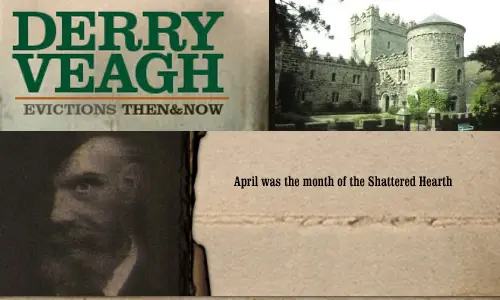Assisted Emigration - The Answer to Destitution?
Assisted Emigration - The Answer to Destitution?
Instead of devising land reclamation or other projects, WS Trench borrowed an idea for “assisted emigration” of the ’superabundant’ rural poor from his cousin, Francis Trench, Agent-in-Ireland for the Kildare-based estates of the absentee Duke of Leinster.
In 1843, as Land Agent to the Shirley estates, WS Trench put this scheme into effect. It led to the shipping off (by his successors) of some 1300 Shirley tenants to America.
In 1850, Trench met in England with Lord Lansdowne, at Bowood House, his country seat in Wiltshire. He proposed an assisted emigration scheme which, from 1851-1855, led to the transport of over 3900 Lansdowne tenants from Kenmare to Cork to America.
In adopting Trench’s plan, Lansdowne became one of 10 Irish landlords to use assisted emigration. Between 1835-1855 their agents removed 50,000 destitute tenants from their estates.
The assisted emigration schemes fell off dramatically until they resume in the depression year of 1862. The exceptions to this rule are the evictors of Gweedore and Derryveagh.
Indeed, questions are begged: Did WS Trench’s nephew, John George Adair, have any advice or foreknowledge that by April 1861, “assisted emigration” by the Donegal Relief Fund could or would be used, in the end, to “humanely” dispose of Derryveagh’s youth? Could he not have been aware of the strategy? Were there humane options other than “assisted emigration”?
Research from:
Gerard Lyne
The Lansdowne Estate in Kerry
Under W.S. Trench, 1849-1872
2001

